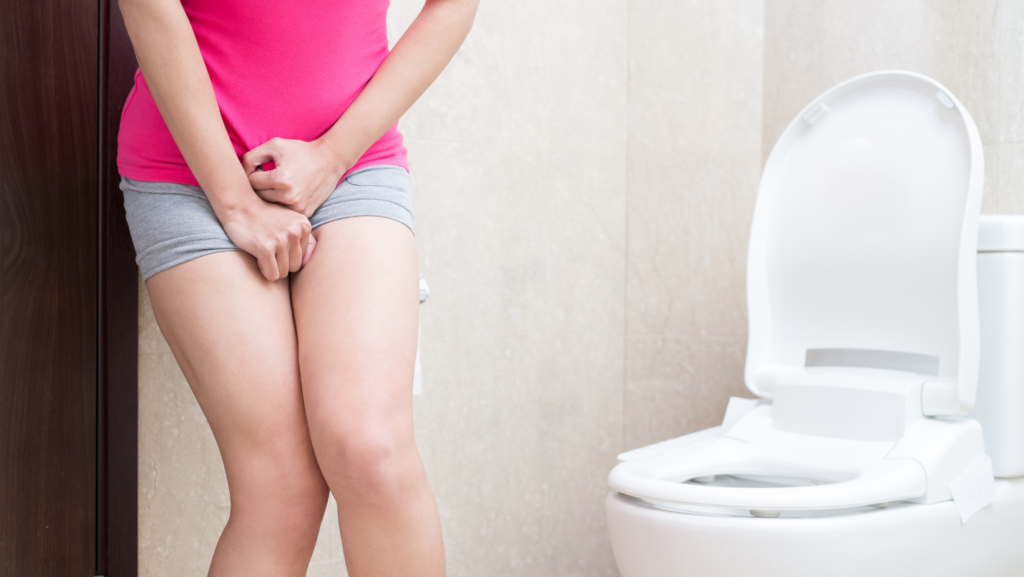
People who struggle with incontinence often feel that it can impact their day-to-day, with a feeling that they are unable to enjoy being out and about in public because they are embarrassed because of leakage. You are not the only person who feels that way, nor will you be the last.
Incontinence is when a person has urine leakage on accident and feels that they are not able to control their bladder.
It is a common issue with women and you can often identify the different causes, as it is usually related to aging, pregnancy, delivery, and menopause.
- Urge incontinence happens when there is a sudden urge to urinate accompanied by leakage; this type of incontinence is often caused by an infection, bladder stones, or constipation.
- Stress incontinence occurs with coughing, laughing, or any type of exertion that increases pressure in the abdomen; this type is common among elderly women.
- Overflow incontinence happens when the bladder is too full for bladder muscles to empty it; this type can be caused by nerve damage, a tumor, or blockage in the urinary tract.
- Functional incontinence occurs when physical or mental impairments make it difficult for an individual to get to the toilet in time; this type is common among people with developmental disabilities or limited mobility due to age or chronic conditions.
Avoiding certain workouts and treatments is essential, as they could exacerbate leakage issues or worsen the condition.
Staying active is vital to your overall health, mentally and physically, so being able to do certain exercises without fear of leakage and reducing that chance will give you a piece of mind while exercising.
6 Exercises To Help Treat Incontinence
Incontinence, or the involuntary leakage of urine, is a condition that affects millions of people. Fortunately, there are several exercises you can do to help reduce symptoms and make managing incontinence easier.
1. Pelvic Floor Exercises:
Kegel exercises can prevent bladder leaks by strengthening pelvic floor muscles. Simply tighten and release these muscles as if stopping urine midstream. Regular practice improves muscle tone and control, aiding in managing incontinence.
2. Abdominal Contraction:
Draw your belly button toward your spine, hold for 10 seconds, then release. Repeat up to 10 times, as needed throughout the day. This strengthens your abdomen and pelvic floor, improving bladder control and reducing incontinence symptoms
3. Pelvic Tilts:
Pelvic tilts are an exercise that involves lying on your back with your feet flat on the ground. You push your pelvis towards the ceiling, hold for three seconds, and slowly lower back down. This exercise will stretch and strengthen your muscles, reducing tension that causes incontinence.
4. Supine Squeezes:
Lie on your back with bent knees and feet flat on the ground. Place one foot over the opposite knee and gently squeeze it against your stomach. Release and switch sides. Doing this regularly strengthens muscles and reduces incontinence.
5. Gluteal Contractions:
To do gluteal contractions, lie on your back with your knees bent and feet flat. Lift one leg off the floor while squeezing your glutes. Hold for 10 seconds, then switch legs. This strengthens buttock muscles and improves bladder control.
6. Squatting:
Squatting involves standing with feet hip-width apart, then bending at the knees and hips as if sitting back into a chair. Keep your back straight and push through your heels. Regularly doing this can strengthen pelvic floor muscles and reduce incontinence.
As you do start to identify what type of incontinence is causing the issues you are having, you will then be able to come up with an exercise routine that puts the least amount of pressure or strain on the problem area.
Exercises can help manage incontinence, but not all exercises are equal. Knowing which exercises can strengthen bladder muscles is crucial.
This is why we recommend that you come see us!
If you are still struggling with incontinence and want answers, come visit us…
Physical therapy is a great way to help you strengthen your pelvic floor and help you in reducing or eliminate leakage. Incontinence can be difficult to live with and we want you to be happy and healthy, enjoying the things you love to do.
We want to help, so contact our Arvada location today to schedule a time to come see us. Contact our team or schedule a Free Incontinence Screening so we can start to work together to find a treatment plan just for you.
All you need to do is tell us a bit about what’s going on through this quick form and we will have a conversation about how we may be able to help.
You can also give us a call at (720) 722-0685.
See you soon,
Dr. Casey
Other Free Resources That Discuss The Importance Of Strengthening Your Core
Free Guide – 5 Secrets to End Embarrassing Leaking
Read our blog – How To Stop Peeing Every Time You Sneeze, Laugh, Or Jump!
Read our blog – Exercises That Can Help Strengthen Your Core
Check us out on social media – Empower PT + Pilates Facebook / Empower PT + Pilates Instagram
+ view comments . . .